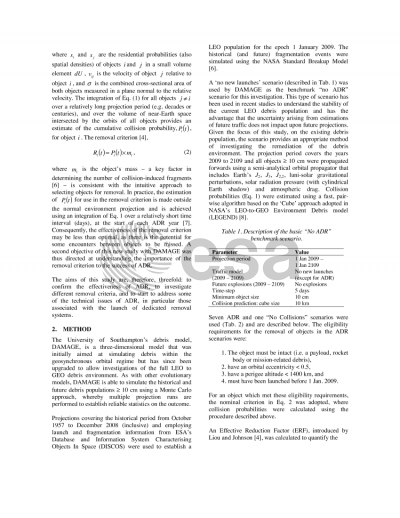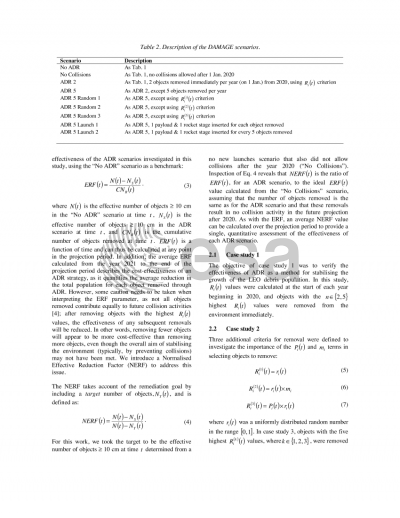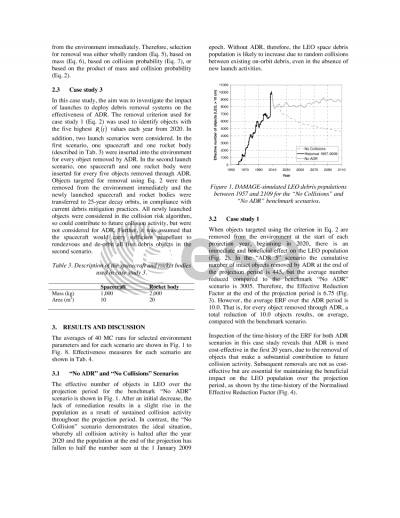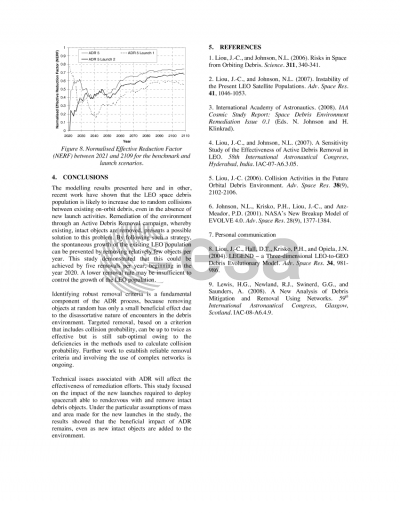Document details

Abstract
Recent debris modelling results have indicated that the debris density at some Low Earth Orbit (LEO) altitudes has reached a critical level such that the LEO debris population will continue to grow even in the absence of new launches. These simulations have provided a basis for recent investigations of debris environment remediation and Active Debris Removal (ADR). This ongoing work has established the benefits of ADR as a method of stabilising the future LEO debris environment but no consideration has yet been given to the means by which debris would be removed. Hence, with a new study of debris removal using the University of Southampton's DAMAGE model, we show the consequences on the LEO debris environment of additional launch activity to attach and deploy devices to remove existing large debris from orbit. The projection period covered the years 2009 to 2109 and the simulations included removal rates of two and five debris objects per year, starting in the year 2020, with debris selected for removal based on criteria including mass and collision probability. Only launches of debris removal systems plus associated upper stages were modelled and we assumed that these new launches comply with current debris mitigation guidelines. The results confirm the effectiveness of ADR and, within the constraints of this initial study, suggest that launch activities associated with ADR may have only a small impact on the efficacy of future remediation efforts.
Preview








